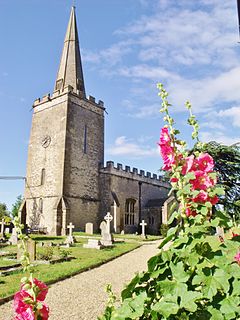Shellingford
| Shellingford | |
|---|---|
 St Faith's parish church |
|
| Shellingford shown within Oxfordshire | |
| Population | 173 (2011 Census) |
| OS grid reference | SU3193 |
| Civil parish |
|
| District | |
| Shire county | |
| Region | |
| Country | England |
| Sovereign state | United Kingdom |
| Postcode district | SN7 |
| Dialling code | 01367 |
| Police | Thames Valley |
| Fire | Oxfordshire |
| Ambulance | South Central |
| EU Parliament | South East England |
| UK Parliament | |
Shellingford, historically also spelt Shillingford, is a village and civil parish about 2 1⁄2 miles (4 km) south-east of Faringdon in the Vale of White Horse in Oxfordshire, England. It was part of Berkshire until the 1974 Local Government Act transferred it to Oxfordshire. The 2011 Census recorded the parish's population as 173.
In the 10th century the toponym was spelt Scaringaford and in the 11th century it was Serengeford. 13th century forms of the name included Salingeford, Schalingeford, Shallingford, Sallingford and Schillingford. In the 18th century it was recorded as Shillingworth. The spelling Shillingford has been discontinued to avoid confusion with the village of Shillingford near Wallingford, also in Oxfordshire.
Abingdon Abbey held the manor of Shellingford from 931 to 1538. In 1598 the courtier Sir Henry Neville bought the manor. It was later held by the Packer family. In 1738 Sarah Churchill, Duchess of Marlborough bought it as an investment. It was later held by the Goodlake and Ashbrook families.
In the 19th century the Goodlakes built a new house to the north of the village, Kitemore House, to replace the Elizabethan manor house south of the church, which was then demolished.
Between 1931 and 1957 there was an aerodrome, RAF Shellingford, between Shellingford and Stanford in the Vale. A quarry now occupies part of the site.
The Church of England parish church of Saint Faith has a late 12th century Norman nave and chancel. The church still has its Norman chancel arch, south door, priest's door and part of the north door. The west tower is an Early English Gothic addition from the early part of the 13th century. In the 14th century the chancel was rebuilt with Decorated Gothic windows and a Decorated wondow was inserted in the south wall of the nave. In about 1400 a chapel was added to the north side of the chancel, but it does not survive. The tower arch was rebuilt in the 15th century. Early in the 16th century two four-light Perpendicular Gothic windows were inserted in the south wall of the nave and another Perpendicular window was inserted in the north wall of the chancel.
...
Wikipedia

